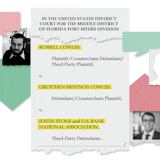A new state report says Minnesota's long list of programs for young children has created a system that's confusing for parents — or for anyone trying to figure out if the programs are running efficiently or adequately preparing children for elementary school.
The assessment from the Office of the Legislative Auditor, presented to state lawmakers Monday, found that the 42 programs related to early education are "complex and fragmented" and in need of significant review and coordination.
Legislative Auditor James Nobles said his office's audit focused specifically on nine of those programs, which vary in eligibility requirements, funding and training required for instructors, among other areas.
"The only things that seem to connect them are good intentions and a sincere hope that they are working effectively," Nobles told members of two state Senate education committees. "Good intentions and hope are important, very important, but they are not enough."
Early education is frequently stated as a top goal of lawmakers from both parties and has been a major spending priority for Gov. Mark Dayton. For years, the state has expanded its offerings; in the past decade it has added the ParentAware Quality Rating and Improvement System, early learning scholarships, voluntary prekindergarten and "school readiness plus." That's on top of longer-running programs like Head Start, a home-visit program and school readiness.
In 2016, the state spent more than $300 million on early learning programs and services. Another $165 million went to early learning scholarships and child-care assistance for low-income families.
While the state has evaluated some programs independently, the 142-page audit found that government departments have not done a more extensive review to see how programs work together, which are more effective, or if efforts are being duplicated. Additionally, Minnesota does not have a comprehensive system to determine if children who participate in any of the programs are ready for elementary school.
"State law places a priority on children's readiness for school," the report notes. "One of the goals in the state's 'World's Best Workforce' statute is to 'meet school readiness goals.' However, the state does not currently measure whether children statewide are prepared for school."


